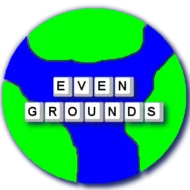Last weekend I got myself a 3D printer. How does this relate to accessible travel? Because if I would like to understand what something looks like and I don’t have the opportunity to touch it, I can hopefully print out a model. I wrote about the 3d printed building project before, but that’s a different concept, where we are creating almost replica quality buildings. But sometimes, a good enough model that I can download from the net can give more information than nothing at all. My other motive was to work on more ideas and concepts for other blind people. I have many in mind, stay tuned.
3D printing is generally not thought of as something to do for a blind person, but this is only partially true. I would say, 3d designing is quite limited without vision, though testing some basic concepts is not all that impossible. But printing on its own is something one could do without vision.
That is, if the printers and associated applications were accessible. I spent days to research the printer that would be most accessible, fortunately it was one that is good quality and meets my needs, but it was discouraging from the beginning that no matter what, I will have to settle with the one I can use, and not the one I would choose. I ended up with the Bambu P1P which was mentioned at several forums for blind 3d enthusiasts. Putting a 3d printer together is not an easy thing, especially if you are doing it for the first time, but once I opened the box, I just threw my hands up and asked for sighted assistance. After instead of the originally promised 15 minutes, in about two hours I had a working printer. Not bad for a first timer. The printer comes with a panel that’s not accessible, but there is a way to connect it to a phone app from which I can do basic printing. Though I won’t be able to do most things the printer offers on my own, I will be able to do what I really need. There is a way to connect to the printer through Bambu Studio from a desktop, I have to admit I couldn’t even set it up. This is a slicer program, which takes a 3d print design and translates it to the printer’s language in a nutshell. I could figure out how to do it by memorizing the keys I need to press, for the most part I was successful with it, but this still doesn’t mean I can use the software. Fortunately, I can rely on my designer who can do the heavy lifting for me, but ideally just like everything else, I would like to do it independently.
The takeaway? There is two.
First, I am glad I jumped in, because it could truly take our 3d design project to a new level where I could immediately test ideas. If I looked for all of the answers before making the purchase, I wouldn’t have bought it. Now I’ll make it work somehow, one step at a time.
The second, is just another evidence that when you create a software, a web site, a product, a service, anything, you don’t know who will use it. You may have your intended or typical audience, but many will not be whom you are thinking about. It is without an exception makes sense to create products and services to be as inclusive as possible. For example, if we could figure out which company creates the most accessible 3d printers with the most accessible software, this information would make it to hundreds of blind and visually impaired users who joined related forums and considering a 3d printer. If they take the plunge and start using it, guess what kind of 3d printer will they recommend to others, even those who don’t need accessible solutions. One well thought out product can go a long, and sometimes unexpected way.


Tom,
What are your thoughts on 3d printed items vs a flat graphic with haptics of the same item?
Fred,
I think they serve a different purpose and they both definitely have a great use.
Haptic graphics are still very expensive, but there you have the advantage of exploring anything you would like to, as long as it is available online, and of course it is meaningful. However, any given graphic will not be accessible because it is haptic, as people will still need a reference point to understand what it is and how to interpret it. A 3D printed item may give you a different view of an object, there the cost is the design. For example we found that just scaling down a building will not make it accessible, though it may in some instances.